Rutin
Synonym(s):Rutoside;Quercetin 3-rutinoside;Sophorin;Tanrutin;Violaquercitrin
- CAS NO.:153-18-4
- Empirical Formula: C27H30O16
- Molecular Weight: 610.52
- MDL number: MFCD00006830
- EINECS: 205-814-1
- SAFETY DATA SHEET (SDS)
- Update Date: 2024-12-18 14:15:30
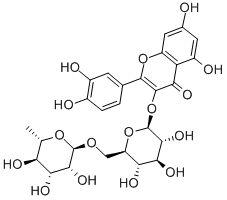
What is Rutin?
Description
Rutin is widely found in nature and is almost contained in all of the Rutaceae and
Sectaceae plants, especially abundant in Rutaceae, Rutaceae, Epacridaceae of leguminous,
buckwheat of Polygonaceae, Eulali of Hypericum, Berchemia polyphylla
var. leioclada of Tetranychidae, and wild wutong leaves of thistle, which are also
used as raw materials in rutin extraction. In addition, it also exists in the Ilex pubescens
of Aquifoliaceae, Forsythia of Oleaceae, pagoda tree pod of Leguminosae,
tobacco, jujube, apricots, flavedo, tomatoes, and other plants.
At present, rutin in China mainly extracted from the Sophora japonica Linn of
leguminous, which is listed in top grade of Shen Nong’s Classic Materia Medica. In
addition, tartary buckwheat, which is rich in rutin and flavonoids, is native to India
and now produced in China’s northwest, southwest, north, south, and other places.
Chemical properties
Pale-Yellow Crystalline Solid
Physical properties
Appearance: light yellow or yellow-green needle crystal or crystalline powder, tastes slightly bitter, usually contains three crystal water, melting point at 176– 178 °C. Solubility: Rutin is soluble in methanol, pyridine, alkaline solution, and boiling water and hardly soluble in cold water, chloroform, carbon disulfide, ether, benzene, and petroleum ether.
History
In the mid-1930s, Hungarian scientist Szent Gyorgy firstly separated the flavonoid
mixture. After the German pharmacy firstly made it into ranosine in 1942, the concept
of vitamin P has been established worldwide. Further study proved that rutin
was the most important flavonoids of vitamin P. These compounds were certified to
have effects on many diseases in medical.
Recently, the research of rutin mainly focuses on the extraction process improvement,
pharmacological effects, and pharmacodynamics research, aiming at improvement
of its bioavailability through the development of different dosage forms. As
for the extraction process, new extraction and purification methods have been developed
since the original alkali extraction acid precipitation method. These methods
greatly improve its extraction efficiency and reduce cost, including hot water precipitation,
hot water extraction with macroporous resin adsorbing purification,
ultrasonic radiation, hot water extraction with alcohol precipitation, cold alkali percolation
extraction with acid precipitation, continuous reflux extraction, ethanol
extraction, supercritical CO2 extraction, and enzymatic hydrolysis .
In recent years, advanced rutin dosage forms, such as rutin cyclodextrin saturation,
HPMC controlled release tablets, solid dispersion tablets, coprecipitate, and
rutin effervescent particles, greatly improve the rutin dissolution rate and its
bioavailability.
The Uses of Rutin
Found in many plants, especially the buckwheat plant. Identity with Ilixanthin. Capillary protectant. Rutin is colored brown by tobacco enzyme under experimental conditions.
The Uses of Rutin
antidiabetic, dipeptidyl peptidase–4 inhibitor
The Uses of Rutin
For nutritional product
The Uses of Rutin
rutin is described as helping to tighten and strengthen skin capillaries, and as such it could help prevent a couperose condition. It also demonstrates anti-oxidant properties. Rutin is a flavonoid found in rue leaves, buckwheat, and other plants.
Background
A flavonol glycoside found in many plants, including buckwheat; tobacco; forsythia; hydrangea; viola, etc. It has been used therapeutically to decrease capillary fragility.
Definition
ChEBI: A rutinoside that is quercetin with the hydroxy group at position C-3 substituted with glucose and rhamnose sugar groups.
Pharmacology
As a flavonoid substance, rutin has a significant protective effect on the cardiovascular
system, including the endothelium-dependent vasodilation through
NO-guanylate cyclase pathway, antagonization on platelet-activating factor (PAF),
inhibition on subsequent reactions induced by PAF binding to its specific membrane
receptor, and protection of myocardial cells .
Rutin also has good free radical scavenging effects. Studies showed that rutin
and its derivatives had a strong free radical scavenging effect, of which rutin possessed
the strongest antioxidant activity. Rutin removed superoxide anion and
hydroxyl radicals, exerted a strong anti-lipid peroxidation, protected mitochondria,
and enhanced the activity of superoxide dismutase (SOD).
Clinical Use
Rutin is mainly used for the adjuvant treatment of hypertension and treatment for the prevention of other bleedings due to lack of rutin, such as cerebral hemorrhage, retinal hemorrhage, purpura, acute hemorrhagic nephritis, chronic bronchitis, and abnormal blood osmolality, restoration of capillary elastic embolism, and also for the prevention and treatment of diabetes and hyperlipidemia . Troxerutin, the most important active ingredient in hydroxy rutin, is used in the treatment of varicose veins/venous disorders, hemorrhoids, lymphedema, and postoperative edema, treatment of thrombosis and cerebrovascular disease, and also in the treatment of diabetes and liver disease. Since rutin has a mild effect with low cost and less adverse reactions, especially its remarkable effect on acute cerebral infarction, it is of great worth on promotion and application of rutin .
Side Effects
Rutin is usually well tolerated. And since rutin is mostly derived from fruits and vegetables, it has mostly no adverse effects when taken orally, and rutin supplements may be safe when taken in doses of up to 600 mg per day for up to 12 weeks. Side effects may include headache or stomach upset.
Metabolism
Not Available
Purification Methods
The vitamin crystallises from MeOH or water/EtOH, dry it in air, then dry it further for several hours at 110o or in high vacuum at 120o. It forms yellow crystals from EtOH/Me2CO/H2O (2:1:1). It has also been purified by passing (0.5g) through a Kieselgel column (30 x 5cm) with EtOAc/MeOH/H2O (100:20:15), and after 750mL have passed through, the yellow fraction of 250mL gives the glycoside (0.3g) on evaporation. [H.rhammer et al. Chem Ber 101 1183 1968, Marini-Bettòlo Gazz Chim Ital 80 631 1950, Beilstein 18/5 V 519.]
Properties of Rutin
| Melting point: | 195 °C (dec.)(lit.) |
| Boiling point: | 576.13°C (rough estimate) |
| alpha | D23 +13.82° (ethanol); D23 -39.43° (pyridine) |
| Density | 1.3881 (rough estimate) |
| refractive index | 1.7650 (estimate) |
| storage temp. | Keep in dark place,Sealed in dry,2-8°C |
| solubility | pyridine: 50 mg/mL |
| form | powder |
| Colour Index | 75730 |
| pka | 6.17±0.40(Predicted) |
| color | yellow to green |
| Water Solubility | 12.5 g/100 mL |
| Merck | 8304 |
| Stability: | Hygroscopic |
| CAS DataBase Reference | 153-18-4(CAS DataBase Reference) |
| NIST Chemistry Reference | Flavone-3-rutinoside, 3,3',4',5,7-pentahydroxy(153-18-4) |
| EPA Substance Registry System | Rutin (153-18-4) |
Safety information for Rutin
| Signal word | Warning |
| Pictogram(s) |
 Exclamation Mark Irritant GHS07 |
| GHS Hazard Statements |
H302:Acute toxicity,oral H315:Skin corrosion/irritation H319:Serious eye damage/eye irritation |
| Precautionary Statement Codes |
P261:Avoid breathing dust/fume/gas/mist/vapours/spray. P305+P351+P338:IF IN EYES: Rinse cautiously with water for several minutes. Remove contact lenses, if present and easy to do. Continuerinsing. |
Computed Descriptors for Rutin
Rutin manufacturer
Green Vision Life Sciences Pvt Ltd.
New Products
Tert-butyl bis(2-chloroethyl)carbamate (S)-3-Aminobutanenitrile hydrochloride N-Boc-D-alaninol N-BOC-D/L-ALANINOL N-octanoyl benzotriazole 4-Hydrazinobenzoic acid 3,4-Dibenzyloxybenzaldehyde 1,1’-CARBONYLDIIMIDAZOLE R-2-BENZYLOXY PROPIONIC ACID 1,1’-CARBONYLDI (1,2-4 TRIAZOLE) 4-HYDROXY BENZYL ALCOHOL 3-NITRO-2-METHYL ANILINE (2-Hydroxyphenyl)acetonitrile 4-Bromopyrazole 5-BROMO-2CYANO PYRIDINE 5,6-Dimethoxyindanone 5-broMo-2-chloro-N-cyclopentylpyriMidin-4-aMine 4-methoxy-3,5-dinitropyridine 2-(Cyanocyclohexyl)acetic acid 2-aminopropyl benzoate hydrochloride 1-(4-(aminomethyl)benzyl)urea hydrochloride tert-butyl 4- (ureidomethyl)benzylcarbamate diethyl 2-(2-((tertbutoxycarbonyl)amino) ethyl)malonate Ethyl-2-chloro((4-methoxyphenyl)hydrazono)acetateRelated products of tetrahydrofuran
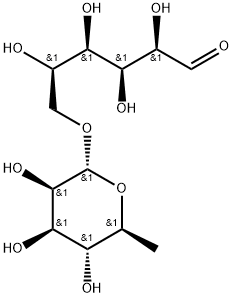
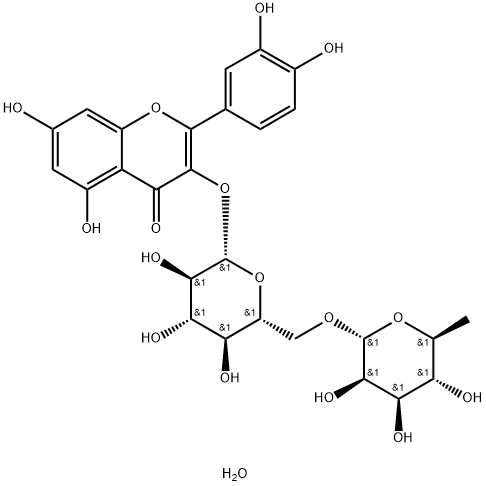

![4H-1-Benzopyran-4-one, 2-(3,4-dihydroxyphenyl)-5,7-dihydroxy-3-[[2,3,4-tris-O-(3-carboxy-1-oxopropyl)-6-O-[2,3,4-tris-O-(3-carboxy-1-oxopropyl)-6-deoxy-α-L-mannopyranosyl]-β-D-glucopyranosyl]oxy]-](https://img.chemicalbook.in/CAS/20211123/GIF/267006-02-0.gif)
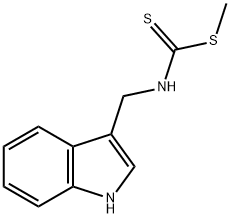
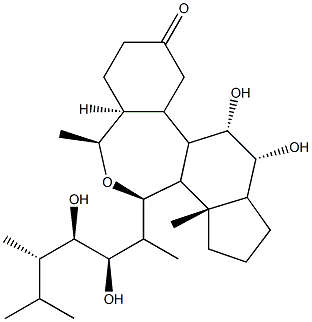
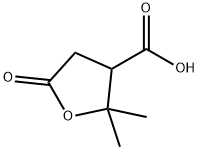
![1-[2-(4-CHLOROPHENYL)-1-(1-HYDROXY-1-PHENYLETHYL)ETHYL]-1,2,4-TRIAZOLE](https://img.chemicalbook.in/CAS/GIF/224047-41-0.gif)
You may like
-
 Rutin supplier High purity and qualityView Details
Rutin supplier High purity and qualityView Details
153-18-4 -
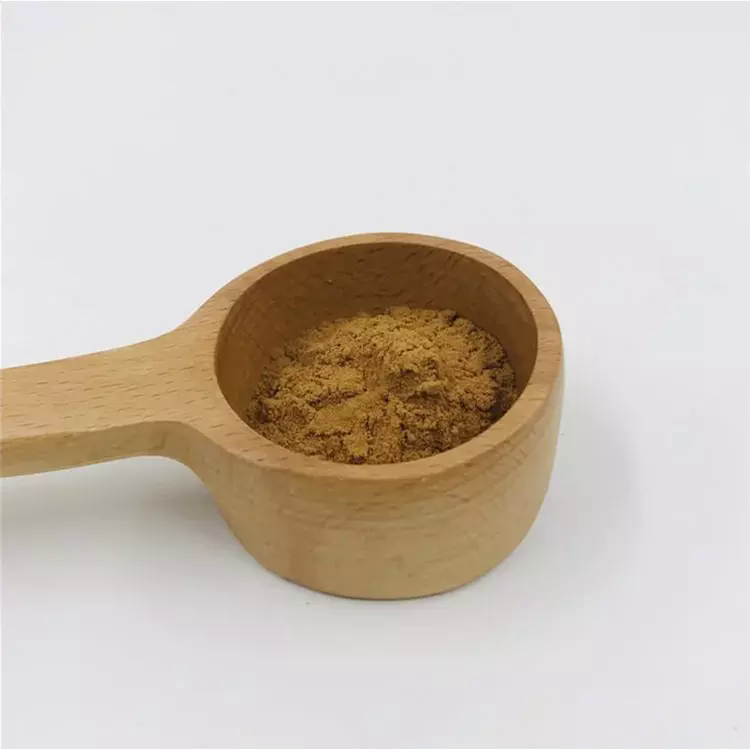 Rutin 99%View Details
Rutin 99%View Details -
 Rutin 97% CAS 153-18-4View Details
Rutin 97% CAS 153-18-4View Details
153-18-4 -
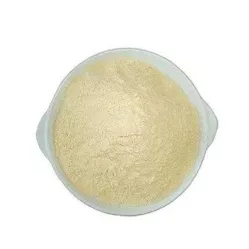 Rutin 98%View Details
Rutin 98%View Details
153-18-4 -
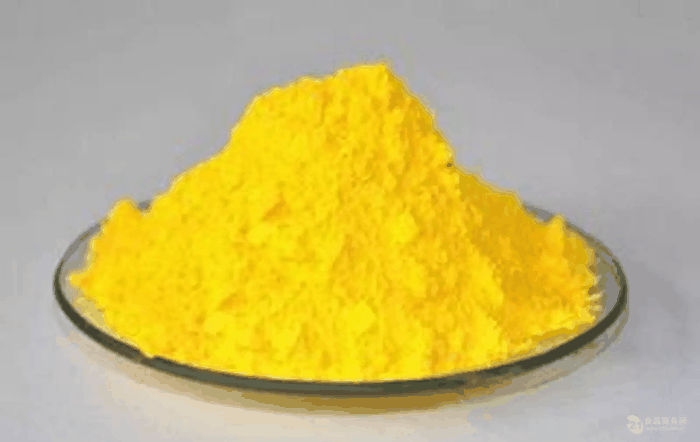 153-18-4 Rutin 98%View Details
153-18-4 Rutin 98%View Details
153-18-4 -
 RUTIN (RUTOSIDE) 99%View Details
RUTIN (RUTOSIDE) 99%View Details -
 Rutin CASView Details
Rutin CASView Details -
 Rutin CAS 153-18-4View Details
Rutin CAS 153-18-4View Details
153-18-4